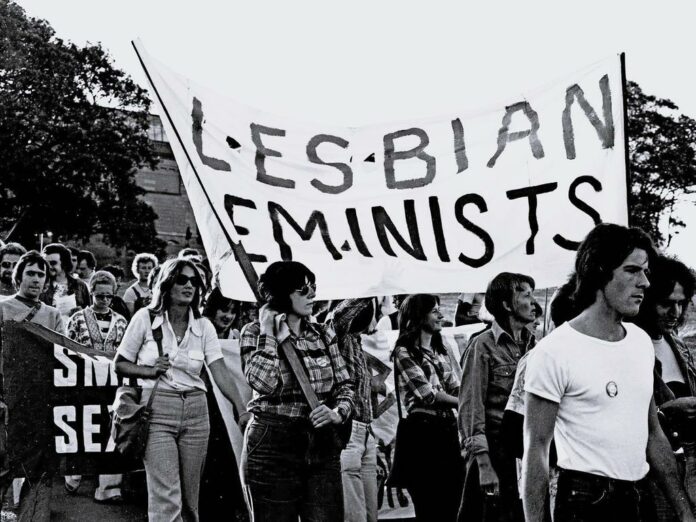The notion that feminists are invariably lesbians is a reductive stereotype that has pervaded societal understanding for decades. This oversimplification not only misrepresents the diverse identities within the feminist movement, but it also undermines the core tenets of feminism itself. To dismantle this stereotype, it is essential to explore the historical context, examine the intersections of sexuality and feminism, and consider the implications of these dynamics on the movement’s evolution and public perception.
Historically, feminism emerged as a response to the systemic inequities faced by women, advocating for equal rights across various domains, including legal status, employment opportunities, and reproductive autonomy. The roots of the movement can be traced back to the suffragettes of the late 19th and early 20th centuries, who campaigned fervently for women’s right to vote. Figures such as Susan B. Anthony and Emmeline Pankhurst exemplified this early wave of activism, driven by a desire to dismantle patriarchal structures that limited women’s participation in public life. Their endeavors laid the groundwork for subsequent waves of feminism, each marked by nuanced goals and varying priorities, yet all united in the pursuit of gender equality.
The conflation of feminism with homosexuality often arises from the close ties between feminist theory and queer studies. In the 1970s and 1980s, influential feminist scholars such as Judith Butler and Adrienne Rich began to interrogate the ways in which heterosexual norms permeate societal structures. Their work posited that patriarchy not only subjugates women but also enforces rigid definitions of sexuality that marginalize queer identities. While these analyses have undoubtedly enriched feminist discourse, they have ironically contributed to the oversimplified narrative that feminists are predominantly lesbians. This perception fails to account for the spectrum of sexual orientations represented within the movement, including, but not limited to, bisexual, pansexual, and heterosexual women.
Moreover, the romantic and sexual politics of individuals engaged in feminist activism are often framed through the lens of their sexual orientation, thus overshadowing their contributions to the movement. Notable feminists such as Simone de Beauvoir and Betty Friedan, who identified as heterosexual, played pivotal roles in advancing feminist theory and activism. De Beauvoir’s seminal work, “The Second Sex,” challenged the existentialist notion of womanhood, asserting that woman is not born, but rather becomes, a woman. Similarly, Friedan’s “The Feminine Mystique” ignited the second wave of feminism in the United States by exposing the discontent of suburban housewives confined to domestic spheres. Their legacies demonstrate that the fight for gender equality can be championed by women of varying sexual orientations.
To further elucidate this point, it is vital to explore the intersectionality of feminism. Coined by Kimberlé Crenshaw in the late 1980s, intersectionality posits that individuals experience oppression in multifaceted ways based on their various social identities—including race, class, gender, and sexual orientation. Feminism, thus, cannot be confined to a singular narrative that centers on the experiences of heterosexual, cisgender women. Instead, it encompasses a kaleidoscope of identities, positioning queer feminists, women of color, and working-class women within the broader framework of gender justice. This inclusive approach is crucial in dismantling the stereotype that feminists are solely lesbians, as it recognizes the diverse experiences and struggles faced by all women, regardless of their sexual orientation.
In contemporary discourse, feminists continue to advocate for issues that transcend sexual orientation, emphasizing reproductive rights, workplace equality, and the fight against gender-based violence. The #MeToo movement, for example, has united women across the spectrum of sexual identities in a collective denunciation of sexual harassment and assault. The emphasis on shared experiences rather than sexual orientation underscores the movement’s multifaceted nature and challenges the notion that feminists are uniformly defined by their sexuality.
As feminism progresses further into the 21st century, the stereotypical association of feminists with lesbianism persists, often perpetuated by media representations and cultural narratives. Films, television shows, and literature frequently portray feminist characters as man-hating or exclusively attracted to women, which not only diminishes the complexities of feminist ideology but also alienates potential allies who do not identify as part of the LGBTQ+ community. This misrepresentation reinforces binary thinking about gender and sexuality, inhibiting a more nuanced understanding of feminism’s mission.
Societal perceptions matter in shaping the feminist agenda. The stereotype that equates feminism with lesbian identity can deter engagement from those who may see the movement as irrelevant to their experiences. To combat this, it is imperative for feminists to actively dismantle stereotypes, promote inclusivity, and engage in dialogues that elevate diverse voices. Platforms that champion feminism must strive for a representation that reflects the authentic multifaceted nature of women’s experiences, transcending simplistic narratives rooted in sexual orientation.
Education also plays a pivotal role in redefining the narrative around feminism and its relation to sexuality. Integrating comprehensive feminist studies into educational curriculums helps foster an understanding that feminism is not homogeneous. By examining feminist theory through a variety of lenses—historical, cultural, and sociological—students can appreciate the movement as embodying an array of feminist thought rather than a monolithic entity bound by sexual orientation.
In conclusion, the stereotype that feminists are invariably lesbians is an oversimplified and detrimental narrative that undermines the rich tapestry of the feminist movement. By recognizing the historical context and the intersectionality of identities within feminism, a more comprehensive understanding of the movement arises. Acknowledging that lesbianism is not a prerequisite for feminist identity allows for greater inclusivity and solidarity among all individuals committed to the principles of gender equality. The fight for social justice and equity must continue to evolve, embracing the plurality of identities that contribute to feminist activism, ensuring that it is relevant to all women and their diverse experiences.





























